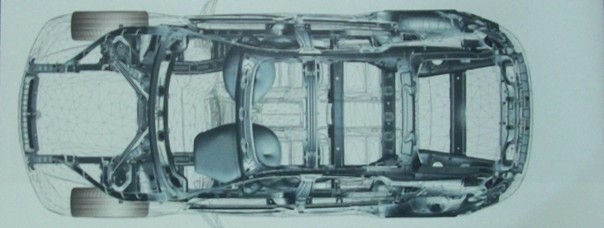| Explanation |
|
The Passenger Safety Cell or safety cage is the area of a vehicle's body that surrounds the passenger compartment and is
strengthened or stiffened to provide extra protection for the occupants. The passenger safety cell is a passive safety feature and works together with the crumple zones to protect the occupants of a vehicle in the event of an accident. The safety cell is necessary because the passengers would be in serious danger if the entire vehicle crumples upon an impact. So part of the vehicle crumples and the part directly surrounding the passenger compartment acts as a cage to protect the persons inside of it. The first passenger safety cell was patented in a car body by Daimler-Benz AG on January 23rd 1951 and the safety cell is now widely used throughout the automotive industry. The strengthened areas that form a safety cage are usually the pillars (from floor to roof), the frame of the roof and the floor pan which will form a cage like structure. Other elements such as the side impact bars in the doors also add to the overall safety of the passenger safety cell. The method used to strengthen these areas is by using stronger materials for instance by using a different material from other parts or by using stronger grade of alloys.  The monocoque chassis of the BMW X6 (except floorpan) with the passenger safety cell The usual monocoque materials are used in safety cages. Special selected alloys of steel and aluminium are used. Even carbon fiber can offer varying levels of stiffness. Even the passenger safety cell which is entirely stiff can have varying levels of stiffness for example the B pillar may be stronger than the other pillars. In the unlikely event of a collision or roll over the passenger safety cell is designed to protect the occupants but they can be injured if thrown on these stiff areas. This means that many passive features also serve to protect passengers from the impact and the cage. Features such as side airbags and pretensioners can protect in two ways. A passenger safety cell is one of the reasons that allow the interior of a vehicle to barely have small amounts of damage while the exterior can be badly damaged. |
| External Links |
| Detailed Explanations Videos |
|
[?] Subscribe To This Site
|
| Random Topics |
| Other random topics of WhyHighEnd? |




